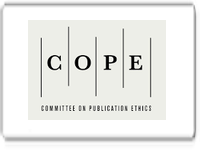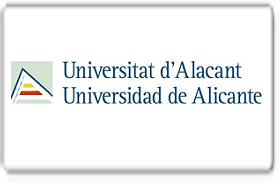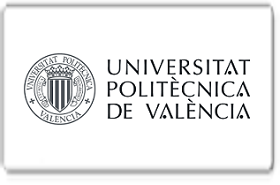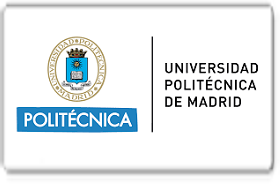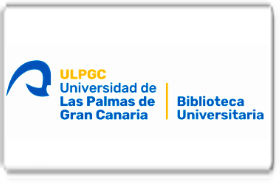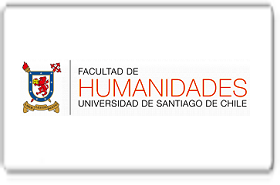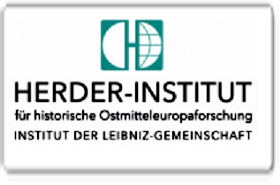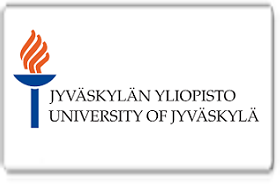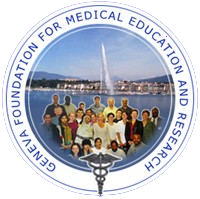Virus del papiloma humano como factor etiopatogénico en el desarrollo de cáncer oro faríngeo: Revisión Bibliográfica
DOI:
https://doi.org/10.56048/MQR20225.8.1.2024.186-203Palabras clave:
Virus del Papiloma Humano; Cáncer Orofaríngeo; Carcinoma de Células Escamosas; Pronóstico; VacunaciónResumen
Introducción: El Virus del Papiloma Humano (VPH) se ha identificado como un factor etiológico significativo en el desarrollo del cáncer orofaríngeo, particularmente en el carcinoma de células escamosas.
Objetivo: Evaluar la relación entre la infección por VPH y la incidencia, progresión y pronóstico del cáncer orofaríngeo.
Metodología: Se realizó una revisión bibliográfica exhaustiva en bases de datos como PubMed, Scopus y Google Scholar, utilizando palabras clave relacionadas con el VPH y el cáncer orofaríngeo. Se incluyeron estudios desde 2019 hasta 2023, abarcando investigaciones clínicas, análisis epidemiológicos y revisiones.
Resultados: Los estudios revelaron que el VPH, especialmente el serotipo 16, está asociado con un aumento en la incidencia del cáncer orofaríngeo, afectando principalmente a pacientes más jóvenes y con menos factores de riesgo tradicionales. Los pacientes con VPH positivo presentaron mejor pronóstico y supervivencia en comparación con los pacientes VPH negativo. La revisión también destacó la importancia de la vacunación como estrategia preventiva.
Conclusiones: El VPH es un factor etiopatogénico clave en el cáncer orofaríngeo, con implicaciones significativas en el pronóstico y la gestión clínica de la enfermedad. La vacunación emerge como una herramienta crucial en la prevención. Sin embargo, es necesario mejorar las tasas de vacunación y la detección temprana para combatir eficazmente la enfermedad.
Descargas
Métricas
Cited
DOI: 10.56048![]()
Citas
Benítez Moreno, L. F., & Morales Gutiérrez, M. A. (2022). Infección Oral por Virus del Papiloma Humano como Factor Pronóstico de la Supervivencia en Pacientes con Diagnóstico de Carcinoma Escamocelular de base de Lengua: Una revisión sistemática.
Bonomo, P., & Livi, L. (2020). Clinical and Translational Radiation Oncology De-intensification for HPV positive oropharyngeal cancer: and yet it moves! 2019 in review. Clin Transl Radiat Oncol, 22, 40–43. https://doi.org/10.1016/j.ctro.2020.03.004
De Felice, F., Tombolini, V., Valentini, V., De Vincentiis, M., Mezi, S., Brugnoletti, O., & Polimeni, A. (2019). Advances in the management of HPV-related oropharyngeal cancer. Journal of oncology, 2019. https://www.hindawi.com/journals/jo/2019/9173729/
Faraji, F., Rettig, E. M., Tsai, H. L., El Asmar, M., Fung, N., Eisele, D. W., & Fakhry, C. (2019). The prevalence of human papillomavirus in oropharyngeal cancer is increasing regardless of sex or race, and the influence of sex and race on survival is modified by human papillomavirus tumor status. Cancer, 125(5), 761-769. https://acsjournals.onlinelibrary.wiley.com/doi/full/10.1002/cncr.31841
Gougousis, S., Mouchtaropoulou, E., Besli, I., Vrochidis, P., Skoumpas, I., & Constantinidis, I. (2021). HPV-related oropharyngeal cancer and biomarkers based on epigenetics and microbiome profile. Frontiers in Cell and Developmental Biology, 8, 625330.https://www.frontiersin.org/articles/10.3389/fcell.2020.625330/full
Guarda, V., Schroeder, L., Pawlita, M., Ikenberg, K., Rupp, N. J., Jochum, W., ... & Broglie, M. A. (2022). Prevalence of Transcriptionally Active HPV Infection in Tumor-Free Oropharyngeal Tissue of OPSCC-Patients. Frontiers in Oncology, 12, 835814. https://www.frontiersin.org/journals/oncology/articles/10.3389/fonc.2022.835814/full
Guo, T., Kang, S. Y., & Cohen, E. E. (2022). Current perspectives on recurrent HPV-mediated oropharyngeal cancer. Frontiers in Oncology, 12, 966899. https://www.frontiersin.org/journals/oncology/articles/10.3389/fonc.2022.966899/full
Hong, A. M., Ferguson, P., Dodds, T., Jones, D., Li, M., Yang, J., & Scolyer, R. A. (2019). Significant association of PD-L1 expression with human papillomavirus positivity and its prognostic impact in oropharyngeal cancer. Oral oncology, 92, 33-39. https://www.sciencedirect.com/science/article/abs/pii/S1368837519300922
Kreimer, A. R., Chaturvedi, A. K., Alemany, L., Anantharaman, D., Bray, F., Carrington, M., et al. (2020). Summary from an international cancer seminar focused on human papillomavirus (HPV)-positive oropharynx cancer, convened by scientists at IARC and NCI. Oral Oncol, 108(April), 104736. https://doi.org/10.1016/j.oraloncology.2020.104736
Lechner, M., Liu, J., Masterson, L., & Fenton, T. R. (2022). HPV-associated oropharyngeal cancer: Epidemiology, molecular biology and clinical management. Nature reviews Clinical oncology, 19(5), 306-327. https://www.nature.com/articles/s41571-022-00603-7
Mehanna, H., Taberna, M., Von Buchwald, C., Tous, S., Brooks, J., Mena, M., ... & Ärztin, L. (2023). Prognostic implications of p16 and HPV discordance in oropharyngeal cancer (HNCIG-EPIC-OPC): a multicentre, multinational, individual patient data analysis. The Lancet Oncology, 24(3), 239-251. https://www.thelancet.com/journals/lanonc/article/PIIS1470-2045(23)00013-X/fulltext
Morand, G. B., Cardona, I., Cruz, S. B. S. C., Mlynarek, A. M., Hier, M. P., Alaoui-Jamali, M. A., & da Silva, S. D. (2022). Therapeutic Vaccines for HPV-Associated Oropharyngeal and Cervical Cancer: The Next De-Intensification Strategy?. International Journal of Molecular Sciences, 23(15), 8395. https://www.mdpi.com/1422-0067/23/15/8395
Ntanasis-stathopoulos, I., Kyriazoglou, A., Liontos, M., Meletios, A., & Gavriatopoulou, M. (2020). Current trends in the management and prevention of human papillomavirus (HPV) infection. Journal of Clinical Oncology, 25(3), 1281–1285. https://www.jbuon.com/archive/25-3-1281.pdf
Odejinmi, F., Egbase, E., Clark, T. J., & Mallick, R. (2021). COVID-19 in Women's health reducing the risk of infection to patients and staff during acute and elective hospital admission for gynaecological surgery. Best Practice & Research Clinical Obstetrics & Gynaecology, 73, 40-55. https://www.sciencedirect.com/science/article/abs/pii/S1521693421000444
Oliva, C., Carrillo-Beltrán, D., Boettiger, P., Gallegos, I., & Aguayo, F. (2022). Human papillomavirus detected in oropharyngeal cancers from Chilean subjects. Viruses, 14(6), 1212. https://www.mdpi.com/1999-4915/14/6/1212
Pan, C., Issaeva, N., & Yarbrough, W. G. (2018). HPV-driven oropharyngeal cancer: Current knowledge of molecular biology and mechanisms of carcinogenesis. Journal of Cancer Research, 1–11. https://link.springer.com/article/10.1186/s41199-018-0039-3
Panarese, I., Aquino, G., Ronchi, A., Longo, F., Roccuzzo, G., Colella, G., et al. (2019). Oral and oropharyngeal squamous cell carcinoma: histopathological parameters of aggressive behavior. Expert Rev Anticancer Ther [Internet], 0(0), 1. https://doi.org/10.1080/14737140.2019.1561288
Pérez, E. G., Medina, A. C., & Galainena, J. J. (2019). Carcinoma escamoso de orofaringe relacionado con el virus del papiloma humano. Revista Científica, 13(3), 84–90. https://www.medigraphic.com/cgi-bin/new/resumen.cgi?IDARTICULO=90545
Rapado-González, Ó., Martínez-Reglero, C., Salgado-Barreira, Á., Rodríguez-Fernández, A., Aguín-Losada, S., León-Mateos, L., ... & Suarez-Cunqueiro, M. M. (2020). Association of salivary human papillomavirus infection and oral and oropharyngeal cancer: a meta-analysis. Journal of Clinical Medicine, 9(5), 1305. https://www.mdpi.com/2077-0383/9/5/1305
Roman, B. R., & Aragones, A. (2021). Epidemiology and incidence of HPV‐related cancers of the head and neck. Journal of Surgical Oncology, 124(6), 920-922. https://onlinelibrary.wiley.com/doi/abs/10.1002/jso.26687
Sathasivam, H. P., Davan, S. P., Chua, S. M., Rohaizat, R. F., Japar, R., Zakaria, Z., ... & Malaysian Head & Neck Cancer Research Group. (2023). Findings from a Malaysian multicentre study on oropharyngeal squamous cell carcinoma. Infectious Agents and Cancer, 18(1), 74. https://infectagentscancer.biomedcentral.com/articles/10.1186/s13027-023-00557-0
Strohl, M. P., Wai, K. C., & Ha, P. K. (2020). De-intensification strategies in HPV-related oropharyngeal squamous cell carcinoma – a narrative review. Journal of Clinical Oncology, 8(23). https://www.ncbi.nlm.nih.gov/pmc/articles/PMC7791209/
Sung, S., Kim, Y., Kim, S. H., Lee, S. J., Lee, S., & Kwak, Y. (2022). Current Evidence of a Deintensification Strategy for Patients with HPV-Related Oropharyngeal Cancer. Journal of Clinical Oncology, 1–20. https://www.mdpi.com/2072-6694/14/16/3969
Szymonowicz, K. A., & Chen, J. (2020). Biological and clinical aspects of HPV-related cancers. Cancer Statistics Worldwide and in the United States, 2. https://www.ncbi.nlm.nih.gov/pmc/articles/PMC7721094/
Wagner, S., Prigge, E. S., Wuerdemann, N., Reder, H., Bushnak, A., Sharma, S. J., ... & Klussmann, J. P. (2020). Evaluation of p16INK4a expression as a single marker to select patients with HPV-driven oropharyngeal cancers for treatment de-escalation. British journal of cancer, 123(7), 1114-1122. https://aacrjournals.org/cancerpreventionresearch/article/12/6/375/275509/Increasing-Incidence-rates-of-Oropharyngeal
Yakin, M., Seo, B., Hussaini, H., Rich, A., & Hunter, K. (2019). Human papillomavirus and oral and oropharyngeal carcinoma: the essentials. Australian dental journal, 64(1), 11-18. https://onlinelibrary.wiley.com/doi/full/10.1111/adj.12652
Yakin, M., Seo, B., Hussaini, H., Rich, A., & Hunter, K. (2019). Human papillomavirus and oral and oropharyngeal carcinoma: the essentials. Australian dental journal, 64(1), 11-18. https://onlinelibrary.wiley.com/doi/full/10.1111/adj.12652
You, E. L., Henry, M., & Zeitouni, A. G. (2019). Human papillomavirus–associated oropharyngeal cancer: review of current evidence and management. Current Oncology, 26(2), 119-123. https://www.mdpi.com/1718-7729/26/2/119
Zakeri K, Dunn L, Lee N. and trials : past failures and future promise. 2022;124(6):962–6.
Zakeri, K., Dunn, L., & Lee, N. (2022). HPV-related head and neck cancer and trials: past failures and future promise. Oncology Journal, 124(6), 962–966. https://onlinelibrary.wiley.com/doi/abs/10.1002/jso.26696
Publicado
Cómo citar
Número
Sección
Categorías
Licencia

Esta obra está bajo una licencia internacional Creative Commons Atribución 4.0.
Los autores se comprometen a respetar la información académica de otros autores, y a ceder los derechos de autor a la Revista MQRInvestigar, para que el artículo pueda ser editado, publicado y distribuido. El contenido de los artículos científicos y de las publicaciones que aparecen en la revista es responsabilidad exclusiva de sus autores. La distribución de los artículos publicados se realiza bajo una licencia 


















